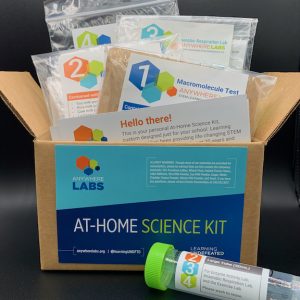Celery Science | Plants need water to survive and they draw water up from their roots through their capillaries. The capillaries are hollow and act a lot like a straw. Adding color to the water helps us visualize this usually invisible process.
Colors of Nature | Think science has nothing to do with art? Think again! Explore the creativity of science through a series of education kits that highlight how art and science work together to help us understand the world.
Discovery Education Viruses and Outbreaks Lesson Starter | Explore resources and instructional materials about viruses and outbreaks. With the recent spread of the coronavirus (COVID-19), it is important for students to learn about the science behind viruses and understand individual measures that can be taken to limit exposure and spread. This collection of resources provides timely updates regarding the coronavirus, describes what a virus is and how it spreads, offers an overview of the history of viruses and outbreaks around the world, and reveals essential guidelines for staying healthy.
DIY Robotic Arm | Robotic arm experiment is an easy science experiments for kids that helps us to understand about physics. This project can be great option for 5th grade science fair ideas or it also can be done at home are classroom. You can make this science projects and learn about machines. Materials needed to make this 5th grade science project are a cardboard, string, straw pipe and elastic.
Filament Games | Free computer, tablet, and phone games on topics ranging from fractions to civics.
GeoGabra | GeoGebra is mathematics software for all levels of education that brings together geometry, algebra, spreadsheets, graphing, statistics and calculus in one easy-to-use package
Garbage Science: Crushing a Soda Can & Shrinking Chip Bag | Garbage can be fun to experiment with before it gets thrown away.
Instant Ice | Sharply knock a bottle of supercooled liquid water on the table and it instantly turns to slushy ice before your eyes.
JOVE Science Education Video Library | Extensive video library helps educators reach their student learning outcome goals; covering core concepts to advanced methods and theories. High-impact animations and visualized real-life experimentations enable quick, in-depth comprehension and support blended learning and flipped classroom initiatives. Content can be embedded in courses through most learning management systems or assigned as standalone supplements. Free to educators and students (must request access) through June 2020.
Lava Lamp | Oil and water separate teaching kids about density of liquids in this quick at-home experiment.
Nonstop Fountain | Make a non stop water fountain out of 3 plastic bottles and straws. This really cool self pouring liquid science trick is a great experiment to try at home.
NOVA’s Topic Earth | Parents and children can explore a range of videos from “Ancient Arctic Animals” to “What it is Like to Live in Antarctica.”
Periodic Table Battleship | Kids will be learning chemistry in such a fun way without even realizing it! You’ll love hearing them call out the names of different elements and getting familiar with the structure of the periodic table.
Science Zone App | The NSF’s Science Zone app allows you to navigate hundreds of exciting videos and high-resolution photos from a wide array of science topics.
Scratch | With Scratch, kids can program their own interactive stories, games and animations and share their creations with an online community. In the process, they develop software graphically as a way of learning the fundamentals of coding language.
Skittles Rainbow in a Glass | Skittles are mostly made of sugar. When you add hot water to them, the sugar dissolves and the coloring on the shell of the Skittles turns the water different colors. The cup with only two red Skittles doesn’t have as much sugar as the cup with ten purple Skittles, but they both have the same amount of water. The amount of matter packed into a certain amount of space is called the density of the material. The red water is less dense than the purple water, so it will float on top of the purple water.
Snow Fluff | Tiny pieces of corn starch get mixed into the shaving cream and suspended in the mixture, creating a snow-like texture kids can use to make snowmen and snowballs.
Spark 101 | free 10 MINUTE classroom videos engage students in authentic STEM problem solving.
X-STEM video library | TED-style talks from luminaries of science, designed for middle and high school students.
Water Xylophone | Play your own music using bottles or glasses filled with differing amounts of liquid.
Zooniverse | Researchers, with the help of Zooniverse volunteers, can analyze information more quickly and accurately than when working alone. Zooniverse volunteers, including high school and undergraduate students, even helped researchers discover a new type of galaxy — the Pea Galaxy — named after its small size and greenish color.

